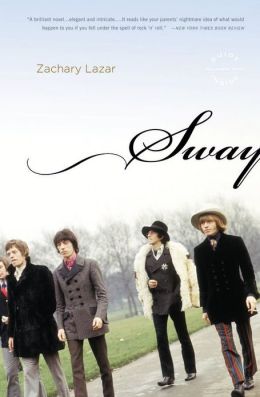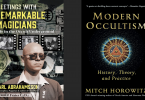A novel about Kenneth Anger and his connections to the Rolling Stones, Brian Jones, Bobby Beausoleil and Charles Manson? That surely sounds to good to be true? It does. But it isn’t.
Zachary Lazar’s novel Sway does indeed exist but is such a mish mash of (mis)appropriation and audacious personality-jacking that one should tread very gently while reading it. Following Kenneth Anger’s creative career and inner developments/motivations, Lazar weaves a speculative web in which we meet Bruce Byron (the guy who plays the biker in Anger’s Scorpio Rising), Bobby Beausoleil, Charles Manson, Mick Jagger, Brian Jones, Keith Richard, Anita Pallenberg and many others. The overall dynamic between time and space makes sense, but anything beyond that doesn’t.
There’s Anger’s adolescence and budding creativity, New York in the early 60s (Scorpio Rising era), Marrakech with the Stones, Haight Ashbury with Bobby Beausoleil, the Manson murders, the death of Brian Jones, Altamont, und so weiter. It could have been sooo good, a novel dressed to thrill in all respects. But instead we’re very fictionally left inside Anger’s mind and its plottings and hyper-sensibilities. Perhaps the point has been to somehow “reveal” sensitive human beings under the surface of all of these myth makers and legends? But the novel never really resonates with probability – even taking these excessive lifestyles in consideration. Instead we get meandering thought processes, shallow dialogues, and numerous references to the occult book Sephiroth (that would probably be Crowley’s Magick in Theory & Practice) that irrationally spellbinds Anger and Anita P throughout the story/stories.
To fill the pages, there are also redundant descriptions of scenes from Anger’s films. I guess to at least build a kind of momentum that is so desperately lacking in the overall scheme. But even here, Lazar screws things up. A description of the Externsteine scene from Lucifer Rising: “When she reaches the summit, it is just before dawn of the winter solstice, the year’s lowest ebb. The sun begins to shine dimly on the rocks, casting a purple glow over the horizon, the hills below. There is a raised stone at the edge of the cliff that she stands on, a perfect circle cut out of its center. Every year on this day, at this moment, the circle’s circumference is entirely filled by the rising sun, the beginning of the new pagan year.” Well, how the hell does this move the story onwards? And hello Mr Lazar, check your Wikipedia. It’s the summer solstice, not the winter one!
And suddenly, out of the blue, come demagogic sections of bizarre pointlessness, like: “Style has an aura that words only diminish. The words follow, trying to explain, but the glamour fades in the glare of opinions and ideas. There is no more Lucifer now, no more Prince of Darkness, no more Angel of Light. There is a return to what was always there before, the silence.”
The above is squeezed in between a “creative” recounting of the fateful Rolling Stones Altamont concert and one where Anger breaks into Mick Jagger’s home to paint a door golden… Could someone please help me understand what it all means?
I certainly don’t mind creative freedom and imaginative use of existing characters. If you’re in the public eye, you’re bound to occasionally end up in the eye of the public storm too. But in this case, I feel almost protective of all the people involved, even those I don’t particularly like. Having romantically immersed myself in Kenneth Anger’s fascinating career and life since I was a teen basically, I feel that all these people have been part of my own projections (with the exception of Charles Manson, I should add). A second rate fantasy adaption of these people’s interactions bugs me.
When people are long gone, dead and buried, it’s perhaps not as bad. But when most of these protagonists are still alive (actually, all but Brian Jones are) it becomes… Well, just weird. In a world where fiction reigns supreme, the most visible fiction will eventually be taken for truth, regardless of distinct disclaimers to the contrary.
Sway is by no means an experimental or creative novel. Mr Lazar has simply taken elements and personae from an incredibly fascinating real life saga and turned it all into pretentious mush. Read it if you will, and weep.
Zachary Lazar, Sway, Back Bay Books, New York, 2008







